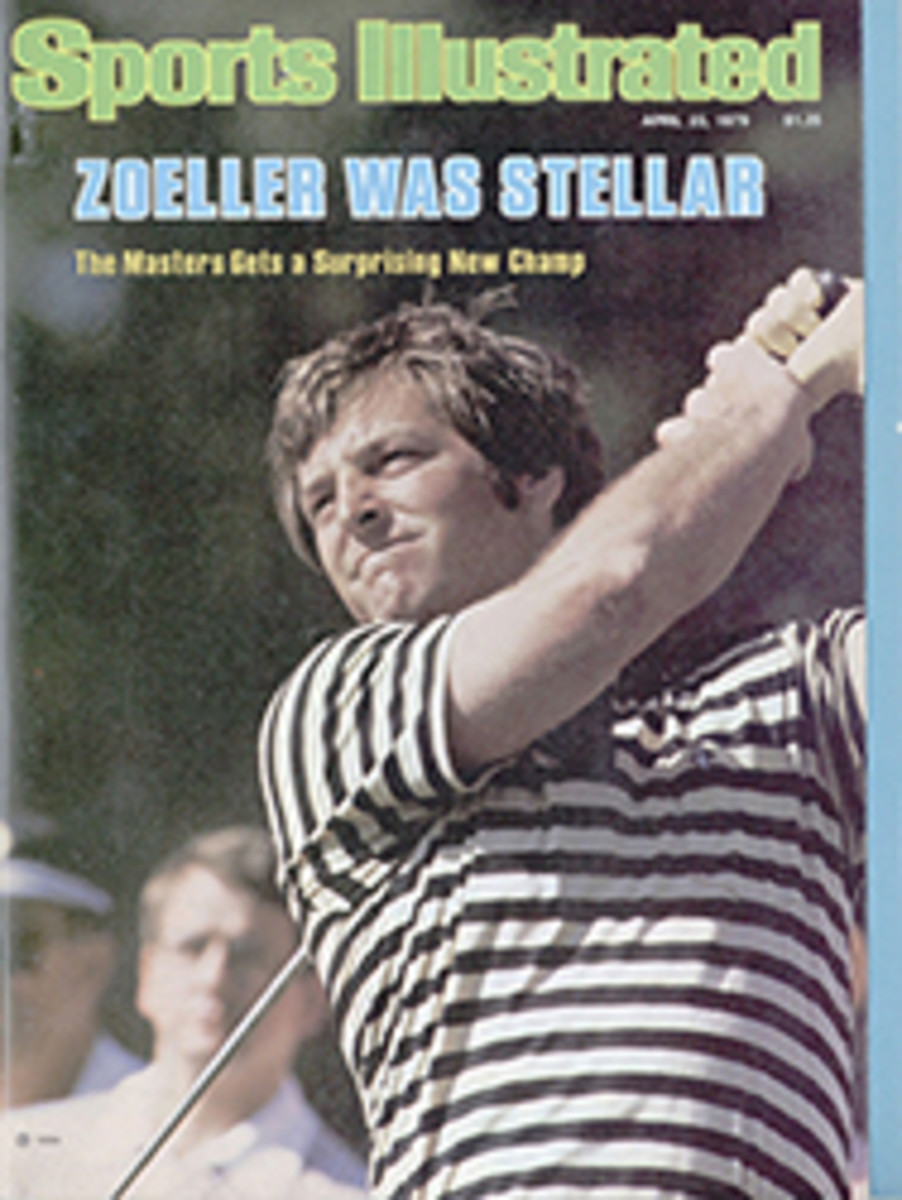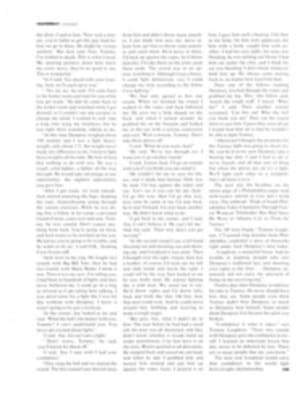
A couple that has won a pair
Probably the least impressive building on Stanford's 8,200 wooded acres is the dark-green shack that nestles against one end of the concrete tennis stadium. It looks like a place for storing sacks of fertilizer. In fact, it's sort of a honeymoon cottage, the headquarters of two unusual marriages—that of the Stanford men's and women's tennis teams and that of coaches Dick and Anne Gould.
Inside, the shack is cramped and cluttered-with a couple of file cabinets, framed photos and magazine covers of past and present Cardinal stars, two sofas and a coffee table, a pair of desks, videotape machines, cases of tennis balls and a mini-refrigerator.
And trophies, some shiny, some festooned with cobwebs. The two newest are special, because in 1978 the Goulds pulled off a unique husband-wife double by coaching national championship teams in the same season.
It is 8 o'clock on a cool spring morning, and the tennis shack is uninhabited. The Phone-Mate has not yet received any messages. It is between quarters at Stanford, but most of the top players will be here in an hour for the first of the day's two workouts. There is to be no holiday for them.
And no holiday for the Goulds. It drizzled the night before, and they are on the 11 Plexipave courts, wielding squeegees, getting rid of the puddles so that not a second of practice time will be lost. So much for the glamour of coaching college tennis.
Later, when the players go off for lunch and rest, the Goulds will catch up on their paper work, answer the phone messages, perform and check off the tasks they listed the night before. Stanford tennis is just one of their enterprises. They give private lessons, teach phys ed classes in the off-season, run the Stanford Tennis Camp and help select tennis teachers for the Club Med resort chain. If time permits before the start of afternoon practice, they will invade the fridge and consume their standard lunch of Cheddar cheese slices on Triscuits washed down by diet soda.
Things are pretty much the same when school is in session. Although there is just one workout for each team then, there is a heavy schedule of dual matches and tournaments. "We get here pretty early in the morning and leave pretty late," says Dick, 41, who has been married to Anne, 27, for a year and a half. "Lots of times there's weekend stuff, and there are things in the summer, even though our teams aren't here. Basically we're together 24 hours a day."
Stanford's men's and women's programs were joined in 1975, in the sense that Dick was made overall tennis director and the teams began practicing on adjacent courts. Before that, the women worked out on the other side of the campus from the tennis stadium.
"I remember sitting down with Dick when they were going to merge the departments," says Nancy Peterson, Stanford's tennis publicist, "and I asked him how he felt about it, because here he had this domain already built. The first thing he said to me was, 'We're going to do the absolute best that we can.'
"That's not the case every place by any means. I know at some other schools, when I've asked what they're doing in women's sports, they've said, 'As little as possible.' "
In pursuit of excellence, Gould recommended Anne Hill, a former Stanford player and Phi Beta Kappa, to coach the women. Dick, who also graduated from Stanford, and Anne got married about two years later; by then the marriage of Stanford's two tennis programs could be regarded as a most successful union. The men's team was third in the nation in '76 and first in '77; the women were second in Anne's first two seasons. Then came last year's unprecedented championship double.
The men's title came first, at the University of Georgia in May. Led by John McEnroe, who had already been the youngest Wimbledon semifinalist in history, the Cardinals were solid favorites to win their second consecutive title and fourth in six years. Matt Mitchell and Perry Wright got Stanford off to a good start by reaching the semis in doubles. McEnroe beat teammate Bill Maze in three sets in the singles semis and then won a tough four-set final over North Carolina's John Sadri. McEnroe thus became the fifth freshman to win the NCAA singles, following Southern California's Bob Falkenburg in 1946 and UCLA's Jimmy Connors and Billy Martin in 1971 and 1975, respectively, and Trinity's Bill Scanlon in 1976.
"My team was practicing back at school," says Anne. "During the semifinals and final we were getting almost an hour-by-hour report. One thing about having a combined program is that each team really takes a special interest in the other and how it's doing. When the men were away, the women were asking, 'What's going on? How are they doing?' "
This season the U.S. Tennis Association has scrapped its women's intercollegiate championships, leaving the trophy-giving to the AIAW. But in 1978 there were still two title tournaments, and confusion reigned. Southern Cal won the USTA's version, held in San Antonio. In early June Stanford won the AIAW version in Salisbury, Md. It was the first national women's team championship in Stanford history.
To mark the occasion the women players bought Anne vanity license plates, which read AIAW 1, to match Dick's NCAA 1 tags.
The Goulds have made the winning seem so easy and joyous that one tends to forget that Stanford shares with other good tennis schools the problem of players turning pro. McEnroe did so after his freshman year. Avon Futures champ Kathy Jordan is sure to leave Stanford after this season, though she will have two years of eligibility left. Mitchell turned pro this season just before three Texas powers, SMU, Texas and Trinity, visited Palo Alto. Dick was left without his best player, and Stanford lost two of the three meets.
And the advantages of a coed program are not always obvious. There are women who get miffed when a man won't hit with them. There are men who give the impression that they wouldn't mind a bit if the females went back to playing on the other side of the campus. Also, as in any sport, there are non-starters who gripe and players low on the ladder who feel slighted.
There is no way to cure the pro or ladder problems; there will always be unhappy athletes and the temptation of money. Perhaps, too, there will always be players who don't show up for the Goulds' annual tennis players' golf tournament and other events designed to build coed tennis solidarity. But the advantages of the combined men's-women's program seem to outweigh the disadvantages.
For example, the Goulds have worked out a deal with Stanford tennis boosters and a travel agent to take a coed holiday every Thanksgiving. Three years ago the vacation spot was Mazatlàn; in '77 it was Kauai; and in '78 it was Montego Bay. For every two boosters who sign up, one player goes free.
Last year the Stanford men and women joined forces to play the pro Golden Gaters of World Team Tennis in the school's 8,000-seat Maples Pavilion. More than 5,000 fans showed up to see ace freshman McEnroe play against alumnus Sandy Mayer. McEnroe lost his match, but the Gaters barely triumphed 24-23 in a super tiebreaker.
The exhibition was just another of Dick's successful promotions. It was he who in 1974 persuaded the school to obtain a used 120'-by-60' Sportface carpet, allowing important matches to be played at night in Maples. The first two such matches, played against USC and UCLA, drew 14,000 fans, the largest two-day crowd ever to see collegiate tennis.
Dick's instruction book, Tennis Anyone?, sells about 35,000 copies a year. His Stanford Tennis School, held on the campus courts during the summer, pumps money into the Buck Club, which in turn contributes funds for tennis grants-in-aid. In 1977 the Goulds led a U.S.-China Relations Committee-sponsored trip to the People's Republic.
In 1966 Dick and a friend from his hometown of Ventura, Calif., Tom Chivington, formed Recreation Tennis Inc., which trains tennis teachers and supplies them to San Francisco Bay area recreation departments. Anne Hill was once one of those teachers. Recreation Tennis has had as many as 40 instructors working for it.
Chivington has known Dick since they took a beginning tennis class together in junior high school and is one of his biggest boosters. "When Dick returned to Stanford as coach in 1966, there were skeptics," he says, "and I said, 'I'll give him five years to win the national championship. In fact, I'm going to bet $10 on it.' "
It took Dick seven years to win the title, still quite an accomplishment, considering he was elbowing his way into a territory previously ruled by master coaches Glenn Bassett of UCLA and George Toley of USC. He did it mainly by being one of the most persistent letter writers in the history of the U.S. mail.
All that letter writing has paid off, because talent has poured in to Stanford in recent years: Roscoe Tanner from Tennessee, Mayer from New Jersey, John Whitlinger from Wisconsin, Pat DuPre from Alabama, Chico Hagey from La Jolla, McEnroe from New York. Some didn't play the full four years, but they were on the scene long enough for Stanford to win its enviable collection of national titles.
Like Dick, Anne is the child of Stanford-educated parents. She grew up in Venezuela, where her father worked as a steel company executive, and she was that nation's top-ranked woman in both singles and doubles in 1968. Stanford was conference champ in women's tennis in '69-'71, which were her three years on the team.
Both the men's and women's teams are less experienced this year—Dick's squad is 9-3 in dual matches, Anne's is 8-2—but both are rich with young, promising players. And while Anne makes birthday cakes for the team members and Dick dreams up new ways to promote college tennis, they haven't neglected to make their lists of tasks, to write their recruiting letters and to keep a firm grip on their squeegee handles. That little green shack next to the tennis stadium is the seat of an empire, and they want to keep it that way.
TWO PHOTOS
Anne's women won the AIAW title last year after Dick's men triumphed in the NCAAs.

